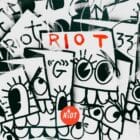Strategy
Strategy is a structured and goal-oriented plan designed to achieve specific objectives by leveraging resources and actions in an organized and intentional manner. It serves as a roadmap for success across various disciplines, from business to marketingStories with purpose—marketing connects brands to people through strategy, creativity, and campaigns that drive impact..
What is Strategy?
Strategy refers to a plan of action designed to achieve specific long-term goals or objectives. It involves setting a clear direction, making informed decisions, and allocating resources effectively to navigate challenges and capitalize on opportunities. Strategy can be applied in various contexts, such as business, marketing, sports, or military operations, but its core purpose remains the same: to achieve desired outcomes in the most efficient and effective way possible.
Why is Strategy Important?
Strategy is the foundation for success in any venture. It helps to provide clarity, align teams, and direct efforts toward common objectives. The benefits of having a well-defined strategy include:
Clear Direction
A well-crafted strategy provides a roadmap for achieving goals, ensuring that every action taken is purposeful and aligned with the overall mission.
Focused Resources
Strategy helps prioritize efforts and allocate resources (time, money, talent) in a way that maximizes impact, ensuring efficiency and effectiveness.
Competitive Advantage
A solid strategy helps organizations or individuals stay ahead of the competition by anticipating changes, identifying opportunities, and responding to market shifts.
Risk Management
Strategy involves assessing risks and uncertainties, allowing for better decision-making and preparedness in facing potential challenges.
Long-Term Success
Rather than focusing on short-term wins, strategy is focused on sustainable growthNot just a buzzword—growth is the art and science of scaling businesses through strategy, creativity, and data-driven decision-making., ensuring long-term achievement and stability.
What Makes a Strong Strategy?
A strong strategy has several key characteristics that make it effective and impactful:
Clear Objectives
Effective strategies are built around clear, well-defined objectives. These goals should be specific, measurable, and aligned with the overall visionThe spark that starts it all—a concept is the big idea that shapes campaigns, guiding everything from visuals to messaging. to ensure focus and direction.
Comprehensive Understanding
Strategy is based on a deep understanding of the environment, market conditions, competition, and available resources. A successful strategy takes into account both internal and external factors that may impact the desired outcome.
Adaptability
The best strategies are flexible. While they are designed to achieve specific goals, they must be adaptable to changing circumstances. A strategy should allow for adjustments and course corrections based on new information or shifts in the landscape.
Actionable Steps
A strong strategy is not just a high-level conceptThe spark that starts it all—ideas fuel campaigns, shape strategy, and turn bold thinking into unforgettable creative.; it breaks down the larger vision into actionable steps. It should provide a clear path for implementation and detail the resources, timelines, and key actions required for success.
Focus on Execution
A strategy is only as good as its execution. Successful strategies include a clear plan for implementation, ensuring that the right actions are taken at the right time, and that teams are aligned with the overall objectives.
Long-Term Vision
Strategic thinking requires a long-term perspectiveThe brand's north star—vision is your long-term purpose, guiding everything from campaigns to company culture.. A strong strategy takes into account future trends, emerging opportunities, and potential challenges, ensuring that decisions made today contribute to long-term success and growth.
How to Develop a Strategy
Developing an effective strategy involves a structured process that combines analysis, planningScoping out the who, what, and when—essential for hitting deadlines and aligning teams., and execution. Here’s how you can develop a successful strategy:
Define Your Goals: Start by identifying the specific objectives you want to achieve. What are the key results or outcomes you are aiming for? Make these goals measurable and aligned with your long-term vision.
Conduct a Situational Analysis: Assess both internal and external factors that could impact your strategy. This includes understanding your strengths, weaknesses, opportunities, and threats (SWOT analysis), as well as market conditions, competition, and consumer trends.
Develop Strategic Initiatives: Break down the larger goals into specific initiatives or actions that will help you achieve them. These initiatives should be actionable, measurable, and tied to clear outcomes.
Allocate Resources: Determine the resources (time, budgetYour financial roadmap—a budget outlines the expected costs and resources for a project, ensuring spending stays on track., personnel) required to execute the strategy. Prioritize investments in areas that will have the greatest impact on achieving your objectives.
Plan for Execution: Develop a clear action plan with timelines, responsibilities, and metrics for success. Identify key milestones and define how progress will be measured and tracked.
Monitor and Adjust: Once the strategy is in motion, continuously monitor its progress. Evaluate what’s working, what’s not, and be ready to make adjustments based on new insights, changing conditions, or unforeseen challenges.
Famous Creative Strategies
Strategic thinking that moved culture, redefined categories, and made brandsMore than a logo—brand is the essence of a company, shaping identity, reputation, and customer perception. unforgettable.
1. Nike – “Just Do It”
Strategy: Make ambition emotional and accessible.
Nike turned a performance brand into a belief system. It stopped selling shoes and started selling the inner voice that tells you to try. “Just Do It” wasn’t a tagline — it was strategy weaponized as mantra.
2. Apple – “Think Different”
Strategy: Align with the rebels to reframe the brand.
While the world shouted specs and speeds, Apple whispered a love letter to misfits. This wasn’t about products. It was about philosophy. It told creatives and dreamers: we see you — and gave them the tools to build their world.
3. Volkswagen – “Think Small”
Strategy: Flip a weakness into a badge of honor.
In a land of gas-guzzling giants, VW zigged hard. “Think Small” made minimalism aspirational before it was a lifestyle. It leaned into honesty, wit, and self-awareness — and changed car adsThe art of persuasion—advertising is the strategic storytelling that builds brands, shapes perceptions, and drives consumer action across multiple channels. forever.
4. Dove – “Real Beauty”
Strategy: Challenge the entire premise of the category.
Where beauty brands sold fantasy, Dove chose reality. Instead of unattainable perfection, it offered visibility and self-worth. This wasn’t just campaign thinking — it was cultural intervention, backed by strategy.
5. Coca-Cola – “Share a Coke”
Strategy: Turn a global brand into a personal experience.
By putting names on bottles, Coke made billions feel seen — and turned their product into a social gesture. Mass personalization, pure and simple. Strategy rooted in human behavior, not just media buys.
6. Old Spice – “The Man Your Man Could Smell Like”
Strategy: Hijack attention through absurdist inversion.
Old Spice was a legacy brand with dusty shelves. The solution? Talk to women. Break the fourth wall. Get weird. They didn’t modernize — they detonated expectations. Strategy as a creative playground.
7. Google – “Year in Search”
Strategy: Use data to tell human stories.
Rather than touting AI or accuracy, Google showed the questions that shaped our year. Loss, love, hope, fear — all expressed through a search box. Strategy that turned product function into emotional mirror.
8. Always – “#LikeAGirl”
Strategy: Reclaim language to shift perception.
They took a throwaway insult and flipped it into empowerment. “Like a girl” went from cringe to courage. Strategy here wasn’t about reachThe total number of unique people who see your content—used in media planning and performance tracking. — it was about redefinition.
Strategic Patterns
Here’s what these campaignsStrategy meets storytelling—campaigns bring big ideas to life, driving awareness, engagement, and conversions through powerful, multi-channel messaging. teach us when we zoom out:
-
Reframe the narrative: VW, Dove, Always — all turned assumptions upside down.
-
Anchor in culture: Nike, Apple, Guinness — they didn’t react to culture; they led it.
-
Personalize at scale: Coke, Google — the magic of making big feel small.
-
Disrupt the default: Old Spice showed that when everyone zigs, a surreal zag can win.
-
Put values before products: The best strategies sell belief systems, not SKUs.
How RIOT Develops Strategy
At RIOT, we specialize in creating strategies that drive meaningful results for our clients. Our approach includes:
Deep Research and Insights: We begin every strategy development process with extensive research, analyzing the market, competitors, and target audienceThe specific group your campaign is built for—defined by demographics, psychographics, or behavior. to uncover insights that drive effective decision-making.
Collaborative Ideation: We work closely with clients to understand their vision, goals, and challenges. Our collaborative approach ensures that the strategy is tailored to their unique needs and objectives.
Data-Driven Decisions: We use data analytics to inform every stage of the strategy, ensuring that decisions are based on evidence and measurable insights.
Clear and Actionable Plans: We provide detailed action plans with specific initiatives, timelines, and accountability, ensuring that the strategy is executed flawlessly.
Continuous Monitoring and Optimization: Our work doesn’t end with the strategy document. We continuously monitor progress, measure success, and adjust the strategy as needed to ensure that the objectives are met.
Dive deeper
Branding, Campaigns, InnovationThe spark that starts it all—creativity is the fearless pursuit of new ideas, powerful stories, and unforgettable brand moments., Growth, AudienceThe heartbeat of every campaign—understanding and engaging the right audience is the key to crafting messages that resonate and drive action.




